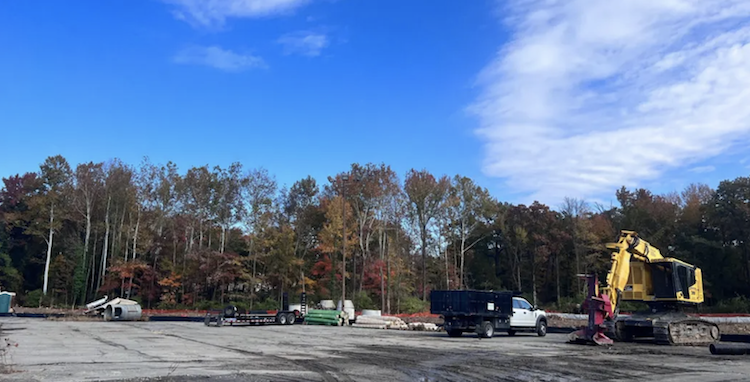A New P3 Model for Building Green Infrastructure
May 27, 2015Change Leader: Extending the Power of Public-Private Partnerships to Watershed Management
August 2, 2015American Infrastructure
Seth Brown & Kristina Twigg
07/16/2015
A perfect storm of increasing regulatory and environmental pressures is driving the need for investments in stormwater infrastructure. While the costs of managing stormwater are rising, a lack of funding is consistently identified as a primary challenge for communities across the United States. However, Community-Based Public-Private Partnerships may provide one innovative funding mechanism.
Stormwater runoff occurs during precipitation events when rain is not intercepted or infiltrated by vegetation or soil, so it runs off land surfaces. The rise of cities and suburbs and their impervious surfaces has greatly increased the amount of runoff while decreasing infiltration and groundwater recharge. Stormwater runoff carries pollutants that build up on the landscape downstream. Runoff also erodes streams, damages infrastructure, and can lead to flooding. According to the U.S. Environmental Protection Agency (EPA), stormwater is the only growing source of water pollution across much of the U.S. The significance of stormwater impacts has become clear, and regulations and management practices are beginning to reflect the state of understanding.
Traditionally, urban drainage design focused on capturing and conveying excess runoff away from buildings and roads, often at a very high discharge rate. In some instances, runoff is stored in ponds to reduce downstream flooding and provide nominal water quality treatment before it is discharged into receiving waterbodies. The limitations of traditional stormwater management have led to the development of green stormwater infrastructure (GSI). Examples of GSI include bioretention facilities (also known as rain gardens), green roofs, permeable pavements, and rainwater harvesting systems.
GSI is intended to capture runoff from small areas, reducing overall discharge volume. It represents a shift from pollution treatment to pollution prevention. GSI benefits extend far beyond water quality. Vegetated practices can help reduce the urban heat island effect, filter air pollutants, and reduce energy consumption. For instance, urban tree canopy can reduce air conditioning costs. Additionally, there are social and economic benefits, such as enhanced property values and an increase in health and well-being for urban dwellers located near green space. Washington, D.C. and Philadelphia, like a number of communities across the U.S., are investing billions in GSI due to its many added benefits. GSI is also being touted as a way to improve climate change resiliency. Los Angeles County, for example, is using GSI in an effort to augment its water supplies through rainwater capture during California’s historic drought.
Despite its benefits, barriers have limited large-scale GSI implementation. Primarily, there is a perception that GSI costs more than traditional infrastructure. This is often untrue, especially considering full life-cycle costs and benefits. While GSI can reduce costs for stormwater management, more stringent regulatory requirements to address the growing problem of stormwater pollution are leading to overall increases in stormwater management funding needs for some cities and counties. For instance, estimated costs for Chesapeake Bay watershed communities to meet regulatory requirements related to urban stormwater runoff management are projected to be several billion dollars per year over the next 10 years.
However, a new approach, the Community Based Public-Private Partnership (CBP3) can reduce overall project costs and increase the rate of GSI implementation. The framework goes beyond the traditional public-private partnership approach by prioritizing environmental and social benefits when implementing large-scale GSI. This is done by changing the profit paradigm for the private sector partner. Profits gained through efficiencies and savings are not simply pocketed but reinvested into the program. Further, private sector profits are tied to total implementation – more GSI in the ground means more profit for the private sector partner. There also are significant requirements to utilize local labor and small businesses for GSI implementation and maintenance. The foundation of the CBP3 is a long-term partnership between public and private sector partners that can last 30 to 50 years or more. The goal of a CBP3 program is to transform a community by implementing large-scale investments in GSI at lower cost and lower risk for the public sector.
Prince George’s County, Maryland is the first CBP3 in the country, but many other communities are considering this model for their GSI investment needs. Prince George’s County is leveraging stormwater utility fees for low-cost private investment to retrofit 15,000 impervious acres. Using traditional public investment and implementation methods, this investment would likely cost more than $2 billion and take multiple decades to complete. The CBP3 entity managing this program, the Clean Water Partnership established by Corvias Solutions, plans to complete the entire project by 2025 and is already realizing project costs of $40,000-$60,000 per impervious acre treated, which is much lower than traditional costs.
As awareness of stormwater issues grows and regulatory requirements become more stringent, the need to accelerate implementation of lower-cost GSI will only increase. The CBP3 model is one that shows great promise. EPA Region 3 released a guide on this approach in April.
Seth Brown is the Principal and Founder of Storm and Stream Solutions, LLC, a consulting firm providing a range of services in the stormwater sector. He may be reached at
seth.brown@stormandstream.com.
Kristina Twigg manages technical communication efforts for the Water Environment Federation’s Water Science & Engineering Center. She may be reached at ktwigg@wef.org.



